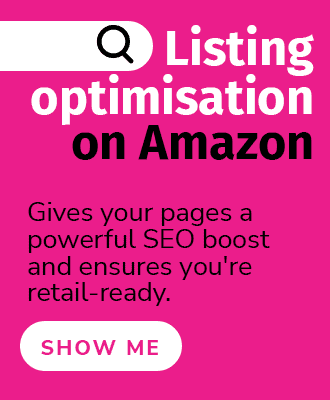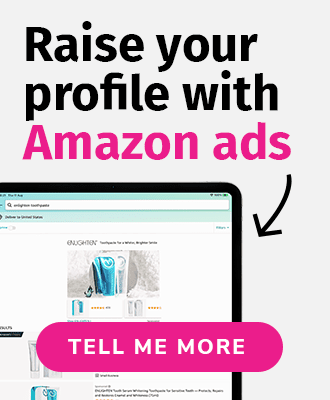For Amazon vendors and Amazon FBA sellers, expanding your business internationally is a fairly easy process if you’re already set up in one Amazon marketplace. As technology and logistics continue to expand in reach, it’s important for brands to look at e-commerce sales goals at a global level, and not merely a country level. But it’s not without some challenges, such as being prepared for changes due to Brexit, thinking about localisation and legal issues, and being aware of what goes on with your international listings. Here’s what you need to know for utilising the European Fulfilment Network (EFN).
What is the Amazon Fulfilment Network?
This network includes all of Amazon’s European marketplaces: The UK, Germany, France, Italy, Spain, the Netherlands, and Sweden.
EFN for Amazon vendors
EU vendors should be aware of Amazon’s European Fulfilment Network (EFN) before signing up to Vendor Central. EFN is when Amazon takes advantage of the free movement of goods agreement within the European Union, by moving inventory across all the different EU marketplaces. This means if a vendor only supplies Amazon inventory in for example, the UK, Germany, France, Spain and Italy will also have access to these products.
How does it work? Amazon will take the listing from the original marketplace, translate it and set it up in another. Sometimes, this is not possible if there are certain compliance reasons or product restrictions that prevent this pan-European approach. Vendors cannot prevent this from happening and any territory agreements they might have with distributors that grant exclusivity for certain countries are not of interest to Amazon. In addition, if a vendor supplies all EU marketplaces but the pricing is cheaper in one country even after taking into account shipping costs, Amazon will take advantage of that lower price. They will purchase the inventory from the source in that country and distribute the inventory to other marketplaces.
On the positive side, this set up may boost sales and provide selection at an EU level, it comes with a number of challenges. Vendors don’t have access to a Vendor Central account for the countries it does not sell directly in. This means they cannot access their product catalog to make edits, set up promotions, create A+ Content or manage AMS campaigns. The vendor is not able to maximise the sales potential in that country and they also may end up with their brand being poorly represented. We recommend vendors have an account in each marketplace if they want to be successful across Europe.
EFN for FBA sellers
Taking advantage of the EFN for FBA sellers in Europe is not automatic, as it is for Amazon vendors. The European Fulfilment Network (EFN) allows sellers with an Amazon Europe Marketplaces account who are also registered for Fulfilment by Amazon to store their inventory in their local fulfilment centre, and fulfil orders coming from other European marketplaces from the same local inventory pool, maximising the control and flexibility that sellers have over their inventory. This allows sellers to have one VAT number, instead of one in each country and simplifies the process of international selling.
Sellers must navigate to Inventory > Sell Globally, and link their existing account to all EU locations they want to sell in. You can also use Seller Central to build international listings and manage content by country.
Sellers are also not obligated to use EFN to fulfil international European FBA orders. You can continue selling locally with a seller account opened directly on the local European marketplace and send your inventory to an Amazon fulfilment centre in that marketplace from which your orders will be fulfilled. The advantage of doing this is that the orders will be available for local, fast track delivery options. For fees related to your fulfilment options, be sure to check updated pricing details.
What is Amazon Pan-European FBA?
Pan-European FBA enables thousands of businesses to reach millions of Prime customers all across Europe, faster and more cost-effectively. Pan-European fulfilment means you are business with VAT registration in all EU countries where Amazon operates. Pan-European FBA strategically allocates your products to fulfilment centres throughout Europe, since there is no restriction on movement due to VAT. This can be costly to set up due to the multiple VAT registrations. For smaller businesses, especially, this may not be worth the convenience factor. For more information, visit Amazon's FBA help page.

(Comparison chart via Amazon Seller Central.)
Brexit challenges for Amazon sellers
Brexit will be simpler for vendors, as Amazon can move stock wherever they wish with their own VAT registration and logistics. However, Brexit will significantly impact Amazon FBA businesses. Because the UK will no longer be a part of the EU, FBA operations will be split and EU orders are no longer eligible to be fulfiled from UK-based warehouses. Existing operations will remain in place until December 31, 2020. As of 2021, this will change, as the UK formally leaves the EU.
Amazon’s announcement and specific details are noted here:
On January 31, 2020, the UK left the EU and entered a transition period where existing arrangements are being kept in place until December 31, 2020. The UK is due to formally leave the EU’s Single Market and Customs Union from January 1, 2021.
While UK-EU negotiations are ongoing (including determining what tariffs, if any, will apply), from January 1, 2021 there will be a customs border between the UK and EU which will have an impact on businesses working across this border.
This will have the following impact for Amazon Selling Partners from January 1, 2021:
- FBA offers using EFN will not be fulfiled across the UK-EU border.
- Pan-European FBA inventory transfers will stop between the UK and EU (however, Pan-European FBA will continue to transfer inventory within the EU region, supporting your sales on Germany, France, Italy and Spain sites)
- To mitigate the impact of these changes, you should consider splitting your inventory and sending it to a fulfilment centre in the UK and the EU, so that you have sufficient stock either side of the new customs border
- This may require you to ship your products across the new UK-EU customs border and provide additional information as part of a customs declaration
Your Amazon business will continue to operate as usual until January 1, 2021. However, there are actions you can start taking now to prepare your business for the new customs borders. For information about how you can prepare for these changes, and for all of the latest information about Brexit, please see our Brexit guidance help pages and the UK government website.
Thank you for selling on Amazon. We remain committed to supporting your business selling in the UK and in the EU as we make this transition, and we will continue to provide the latest information to support you and help your business thrive in the future.
How should Amazon sellers handle Brexit?
If you are currently selling in multiple EU countries and plan to continue this, it’s important to be prepared for the upcoming deadline. Splitting your shipments, with some inventory in the UK and some in an EU country (such as Germany) is the best course of action. Setting up in Amazon DE will require you to register a new VAT number in Germany. This process can take some time. Similarly, sellers must prepare for additional costs when it comes to shipping and storage fees.
Learn more about Brexit and Amazon and prepare your business for Brexit to avoid major sales drop-offs and issues.
Lastly, selling in other locales always presents a language, localisation, legal, and currency issues. If you need support with logistics and fulfilment options, or expert translation and localisation services, please contact us.




